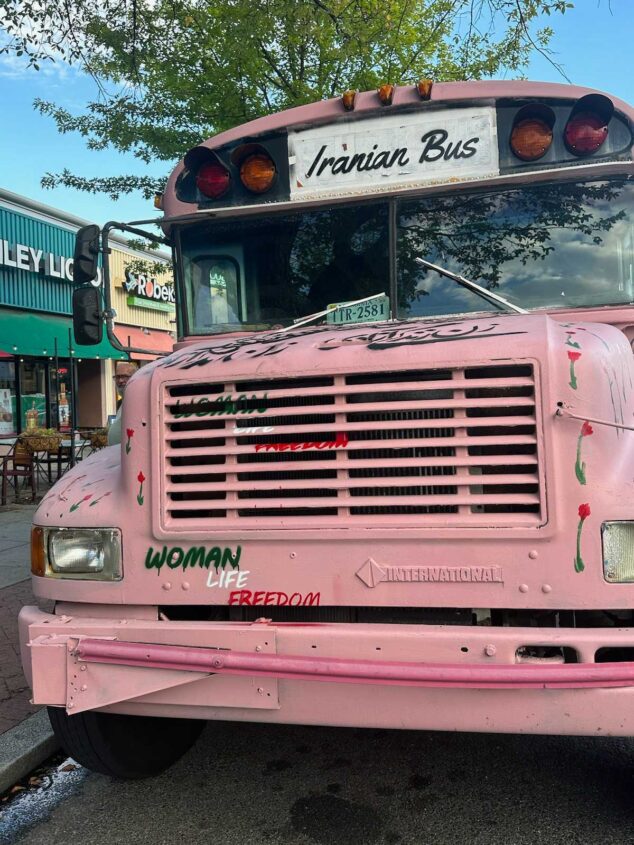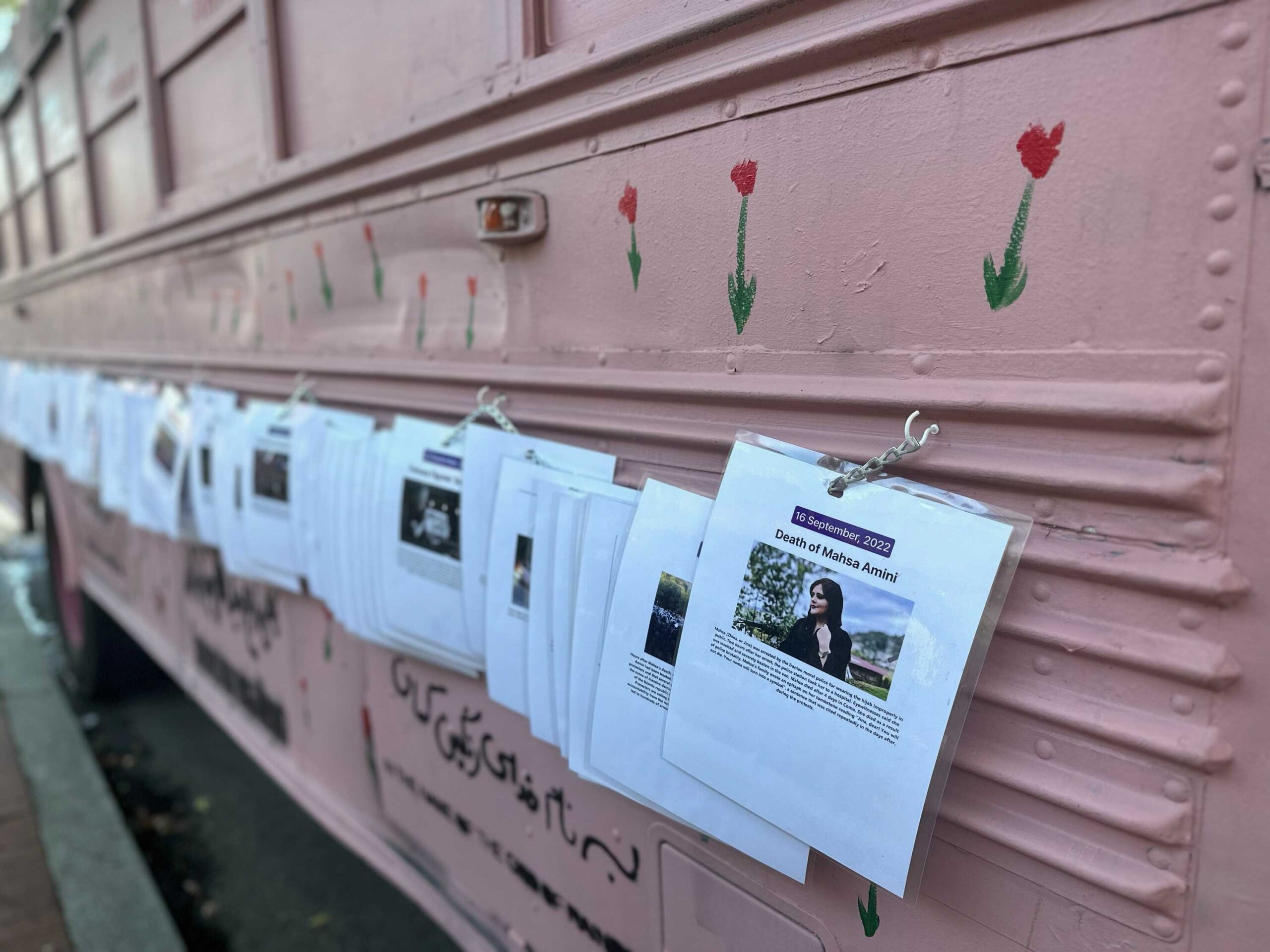“Woman, Life, Freedom.” That’s the slogan of the mass protest movement that erupted in Iran after the death last Sept. 16 of Mahsa Amini, a 22-year-old Kurdish-Iranian woman arrested by the country’s morality police for wearing her headscarf, or hijab, too loosely.
A year later, the streets are no longer crowded with bare-headed women demanding justice for Amini, and an end to Iran’s hardline regime and its strict interpretation and implementation of Islamic law. Yet it would be wrong to conclude the protests are over. Anger at the regime continues to simmer, women defy the law in large ways and small, anti-regime graffiti pops up on buildings and sidewalks, and social media, accessed via VPN, teems with posts from inside the country that challenge the regime’s narrative.

Iran’s theocratic government feels threatened. That’s evident in the growing government crackdowns on uncovered women, the recent threats from Iran’s president, and a new law that seeks even harsher punishments for women caught without hijab.
On July 16, police spokesman Saeed Montazer-Almahdi announced a new round of police patrols to enforce mandatory hijab, warning, Amnesty International said, that the state would take legal action against women and girls “who insist on breaking the norms.” The government also sent texts to more than a million women threatening to confiscate their cars if they are caught driving without headscarves. Punishments for unveiled women have included forcing them to wash corpses and clean government buildings.
Iran’s President Ebrahim Raisi in a speech Aug. 9 vowed to enforce the nation’s Islamic dress code more strictly. Iran’s parliament is considering a “Bill to Support the Culture of Chastity and Hijab,” which would fine women more than $700 and impose prison sentences for failing to wear hijab, fine the businesses that employ them, and would mandate strict gender segregation in schools, hospitals and recreational facilities.
The brutal response to small acts of civil disobedience signals a disconnect between the regime and the populace it purports to govern. Discontent festers. Women continue to defy the repressive edicts. The desire for change has not abated. The protest for women, life and freedom is not over.



